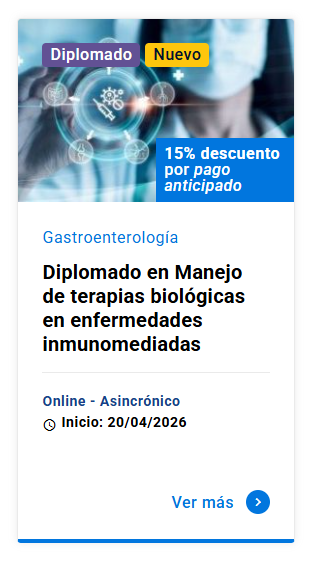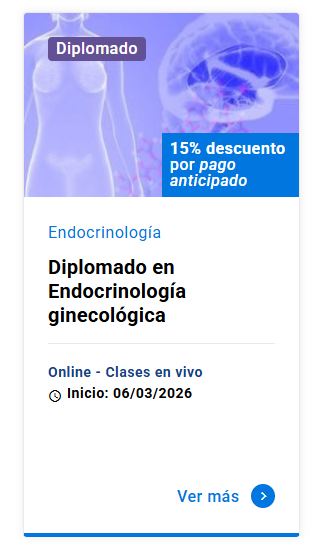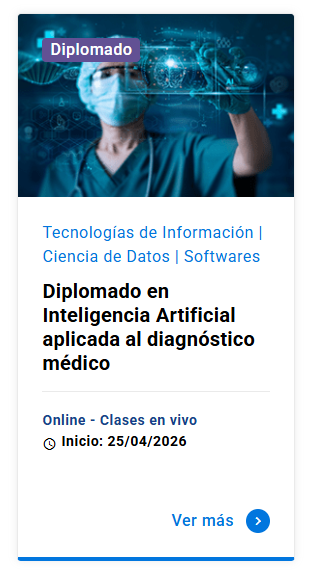Hemorragia digestiva alta
DOI:
https://doi.org/10.11565/arsmed.v44i3.1356Palabras clave:
hemorragia digestiva, inhibidores de bomba de protonesResumen
La hemorragia digestiva alta es una patología frecuente en los servicios de urgencia de nuestro país y del mundo. Su forma de presentación es variable y dado su riesgo de mortalidad la hacen una condición que debe ser conocida y manejada por el médico general y especialista en medicina de urgencia. Es necesario protocolizar su manejo, lo que permite el diagnóstico oportuno y tratamiento adecuado de cada paciente. Sin embargo, el manejo caso a caso requiere el conocimiento del verdadero impacto de las distintas medidas disponibles para así obtener el mayor provecho de los recursos limitados en un servicio de urgencia, sobre todo en casos de hemorragia digestiva alta exsanguinante. Objetivo: presentar el enfrentamiento, correcto diagnóstico, categorización de riesgo y manejo terapéutico de la hemorragia digestiva alta desde la perspectiva de la medicina de urgencias. Método: se realizó una revisión bibliográfica de la literatura científica sobre esta condición, presentándose la evidencia actual de las evaluaciones diagnósticas e intervenciones terapéuticas más utilizadas actualmente. Resultados: se presenta la evidencia actual respecto a la sospecha, diagnóstico, manejo inicial y disposición de la hemorragia digestiva alta, en el contexto de la atención en un servicio de urgencia.
Descargas
Citas
Balderas V, Bhore R, Lara L, Spesivtseva J & Rockey D. (2011). The Hematocrit Level in Upper Gastrointestinal Hemorrhage: Safety of Endoscopy and Outcomes. American Journal of Medicine 124, 970–76. DOI: https://doi.org/10.1016/j.amjmed.2011.04.032
Bennett C, Klingenberg L, Langholz E & Gluud L. (2014). Tranexamic Acid for Upper Gastrointestinal Bleeding. Cochrane Database of Systematic Reviews 21, CD006640. DOI: https://doi.org/10.1002/14651858.CD006640.pub3
Chandra S, Hess E, Agarwal D, Nestler D, Montori V, Wong L, Song K, Wells G & Stiell I. (2012). External Validation of the Glasgow-Blatchford Bleeding Score and the Rockall Score in the US Setting. American Journal of Emergency Medicine 30, 673–79. DOI: https://doi.org/10.1016/j.ajem.2011.03.010
Chavez-Tapia N, Barrientos-Gutierrez T, Tellez-Avila F, Soares-Weiser F & Uribe M. (2010). Antibiotic Prophylaxis for Cirrhotic Patients with Upper Gastrointestinal Bleeding. The Cochrane Database of Systematic Reviews 9, CD002907. DOI: https://doi.org/10.1002/14651858.CD002907.pub2
Cheung K & Leung W. (2017). Gastrointestinal Bleeding in Patients on Novel Oral Anticoagulants: Risk, Prevention and Management. World Journal of Gastroenterology 23, 1954. DOI: https://doi.org/10.3748/wjg.v23.i11.1954
Cremers I & Ribeiro S. (2014). Management of Variceal and Nonvariceal Upper Gastrointestinal Bleeding in Patients with Cirrhosis. Therapeutic Advances in Gastroenterology 7, 206–16. DOI: https://doi.org/10.1177/1756283X14538688
De Groot NL , van Oijen MG , Kessels K , Hemmink M, Weusten BL , Timmer R , Hazen WL, van Lelyveld N , Vermeijden RR , Curvers WL , Baak BC , Verburg R, Bosman JH , de Wijkerslooth LR , de Rooij J , Venneman NG ,Peniques M, van Hee K, Scheffer BC, van Eijk RL , Meiland R, Siersema PD, Bredenoord AJ (2014). Reassessment of the Predictive Value of the Forrest Classification for Peptic Ulcer Rebleeding and Mortality: Can Classification Be Simplified? Endoscopy 46, 46–52. DOI: https://doi.org/10.1055/s-0033-1344884
DeLaney M & Greene C. (2015). Evaluation And Management Of Patients With Upper Gastrointestinal Bleeding. Emergency Medicine Practice 17.
Gralnek I, Dumonceau J, Kuipers E, Lanas A, Sanders DS, Kurien M, Rotondano G, Hucl T, Dinis-Ribeiro M, Marmo R, Racz I1, Arezzo A, Hoffmann RT, Lesur G, de Franchis R, Aabakken L, Veitch A, Radaelli F, Salgueiro P, Cardoso R, Maia L, Zullo A, Cipolletta L & Hassan C. (2015). Diagnosis and management of nonvariceal upper gastrointestinal hemorrhage: European Society of Gastrointestinal Endoscopy (ESGE) Guideline. Endoscopy 47, 1-46. DOI: https://doi.org/10.1055/s-0034-1393172
Hamoui N, Docherty S & Crookes P. (2003). Gastrointestinal Hemorrhage : Is the Surgeon Obsolete ? Emergency Medicine Clinics of North America 21, 1017–56. DOI: https://doi.org/10.1016/S0733-8627(03)00066-X
Hearnshaw S, Logan R, Lowe D, Travis S, Murphy M & Palmer K. (2011). Acute Upper Gastrointestinal Bleeding in the UK: Patient Characteristics, Diagnoses and Outcomes in the 2007 UK Audit. Gut 60, 1327–35. DOI: https://doi.org/10.1136/gut.2010.228437
Heffner A, Swords D, Neale M & Jones A. (2013). Incidence and Factors Associated with Cardiac Arrest Complicating Emergency Airway Management. Resuscitation 84 , 1500–1504. DOI: https://doi.org/10.1016/j.resuscitation.2013.07.022
Ioannou G, Doust J & Rockey D. (2009). Terlipressin for Acute Esophageal Variceal Hemorrhage. Cochrane Database of Systematic Reviews (Online) 1, CD002147.
Jensen D & Machicado G. (1988). Diagnosis and Treatment of Severe Hematochezia: The Role of Urgent Colonoscopy After Purge. Gastroenterology 95, 1569–74. DOI: https://doi.org/10.1016/S0016-5085(88)80079-9
Kravetz D, Bosch J, Arderiu M, Pizcueta M & Rodés J. (1989). Hemodynamic Effects of Blood Volume Restitution Following a Hemorrhage in Rats with Portal Hypertension due to Cirrhosis of the Liver: Influence of the Extent of Portalâ€systemic Shunting. Hepatology 9, 808–14. DOI: https://doi.org/10.1002/hep.1840090603
Kruger K, Heindel W, Dolken W, Landwehr P & Lackner K. (1996). Angiographic Detection of Gastrointestinal Bleeding. An Experimental Comparison of Conventional Screen-Film Angiography and Digital Subtraction Angiography. Investigative Radiology 31, 451–57. DOI: https://doi.org/10.1097/00004424-199607000-00008
Laine L. (2016). Upper Gastrointestinal Bleeding Due to a Peptic Ulcer. New England Journal of Medicine 374, 2367–76. DOI: https://doi.org/10.1056/NEJMcp1514257
Laine L & Jensen D. (2012). Management of Patients with Ulcer Bleeding. The American Journal of Gastroenterology 107, 345–60. DOI: https://doi.org/10.1038/ajg.2011.480
Lee S & Kearney D. (2004). A Randomized Controlled Trial of Gastric Lavage prior to Endoscopy for Acute Upper Gastrointestinal Bleeding. Journal of Clinical Gastroenterology 38, 861–65. DOI: https://doi.org/10.1097/00004836-200411000-00005
Leontiadis G, Sharma V & Howden C. (2007). Proton Pump Inhibitor Therapy for Peptic Ulcer Bleeding: Cochrane Collaboration Meta-Analysis of Randomized Controlled Trials. Mayo Clinic Proceedings 82, 286–96. DOI: https://doi.org/10.1016/S0025-6196(11)61024-0
Lim L, Ho K, Chan Y, Teoh P, Khor J, Lim L, Rajnakova A, Ong T & Yeoh K. (2011). Urgent Endoscopy Is Associated with Lower Mortality in High-Risk but Not Low-Risk Nonvariceal Upper Gastrointestinal Bleeding. Endoscopy 43, 300–306. DOI: https://doi.org/10.1055/s-0030-1256110
Long M, Lichtenstein D & Laine L. (2015). Review: In High-Risk Ulcers, Intermittent and Continuous PPI Therapy Do Not Differ for Recurrent Bleeding. Annals of Internal Medicine, JC8. DOI: https://doi.org/10.7326/ACPJC-2015-162-2-008
Mcgee S & Abernethy W. (1999). Is This Patient Hypovolemic? JAMA 281, 1021–29. DOI: https://doi.org/10.1001/jama.281.11.1022
Mihata R, Bonk J-A & Keville M. (2013). Resuscitation Of The Patient With Massive Upper Gastrointestinal Bleeding. EM Critical Care 3.
Ministerio de Salud. 2010. Encuesta Nacional de Salud (ENS) Chile 2009-Â2010. Gobierno de Chile.
Minno A, Spadarella G, Spadarella E, Tremoli E & Di Minno G. (2015). Gastrointestinal Bleeding in Patients Receiving Oral Anticoagulation: Current Treatment and Pharmacological Perspectives. Thrombosis Research. DOI: https://doi.org/10.1016/j.thromres.2015.10.016
Nable J & Graham A. (2016). “Gastrointestinal Bleeding.†Emergency Medicine Clinics of North America 34, 309–25. DOI: https://doi.org/10.1016/j.emc.2015.12.001
National institute for health and clinical excellence. (2012). Acute Upper Gastrointestinal Bleeding : Management. NICE Clinical Guideline, June.
Odutayo A, Desborough MJ, Trivella M, Stanley AJ, Dorée C, Collins GS, Hopewell S, Brunskill SJ, Kahan BC, Logan RF, Barkun AN, Murphy MF & Jairath V (2017). Restrictive versus Liberal Blood Transfusion for Gastrointestinal Bleeding: A Systematic Review and Meta-Analysis of Randomised Controlled Trials. The Lancet Gastroenterology & Hepatology 2, 354–60. DOI: https://doi.org/10.1016/S2468-1253(17)30054-7
Roberts I, Coats T, Edwards P, Gilmore I, Jairath V, Ker K, Manno D, Shakur H, Stanworth S & Veitch A. (2014). HALT-IT--Tranexamic Acid for the Treatment of Gastrointestinal Bleeding: Study Protocol for a Randomised Controlled Trial. Trials 15, 450. DOI: https://doi.org/10.1186/1745-6215-15-450
Sreedharan A, Martin J, Leontiadis G, Dorward S, Howden C, Forman D & Moayyedi P. (2010). Proton Pump Inhibitor Treatment Initiated prior to Endoscopic Diagnosis in Upper Gastrointestinal Bleeding. Cochrane Database Syst Rev, 7, CD005415. DOI: https://doi.org/10.1002/14651858.CD005415.pub3
Srygley D & Gerardo C. (2012). Does This Patient Have a Severe Upper Gastrointestinal Bleed ? JAMA 307, 1072–79. DOI: https://doi.org/10.1001/jama.2012.253
Stanley A, Laine L, Dalton H, Ngu J-H, Schultz M, Abazi R, Zakko L, Thornton S, Wilkinson K, Khor C, Murray I & Laursen S. (2017). Comparison of Risk Scoring Systems for Patients Presenting with Upper Gastrointestinal Bleeding: International Multicentre Prospective Study. Bmj, 356. DOI: https://doi.org/10.1136/bmj.i6432
Stanley A, Ashley A, Dalton R, Mowat C, Gaya R, Thompson E, Warshow U, Groome M, Cahill A, Benson G, Blatchford O & Murray W. (2009). Outpatient Management of Patients with Low-Risk Upper-Gastrointestinal Haemorrhage: Multicentre Validation and Prospective Evaluation. The Lancet 373, 42–47. DOI: https://doi.org/10.1016/S0140-6736(08)61769-9
Udell J, Wang C, Fitzgerald J, Mak E & Yoshida E. (2012). Does This Patient With Liver Disease Have Cirrhosis ? JAMA 307, 832–42. DOI: https://doi.org/10.1001/jama.2012.186
Villanueva C. (2013). Transfusion Strategies for Acute Upper Gastrointestinal Hemorrhage. New England Journal of Medicine 368, 11–21. DOI: https://doi.org/10.1056/NEJMoa1211801
Walls R, Marx J, Hockberger R, Adams J & Rosen P. (2017). Rosen’s Emergency Medicine : Concepts and Clinical Practice. Emergency Medicine, Vol. 2.
Wolf A, Wasan S & Saltzman J. (2007). Impact of Anticoagulation on Rebleeding Following Endoscopic Therapy for Nonvariceal Upper Gastrointestinal Hemorrhage. The American Journal of Gastroenterology 102, 290–96. DOI: https://doi.org/10.1111/j.1572-0241.2006.00969.x
Wu WC, Rathore SS, Wang Y & Radford MJ. (2001). Blood Transfusion in Elderly Patients with Acute Myocardial Infarction. England Journal of Medicine 345, 1230–36. DOI: https://doi.org/10.1056/NEJMoa010615
Young P, Cotton B & Goodnough L. (2011). Massive Transfusion Protocols for Patients With Substantial Hemorrhage. Transfusion Medicine Reviews 25 , 293–303. DOI: https://doi.org/10.1016/j.tmrv.2011.04.002
Descargas
Publicado
Cómo citar
Licencia
Derechos de autor 2019 ARS MEDICA Revista de Ciencias Médicas

Esta obra está bajo una licencia internacional Creative Commons Atribución-CompartirIgual 4.0.
Los autores/as conservan sus derechos de autor y garantizan a la revista el derecho de primera publicación de su obra, la que estará simultáneamente sujeta a la Licencia CC BY-SA 4.0 (Ver declaración de Acceso Abierto).







